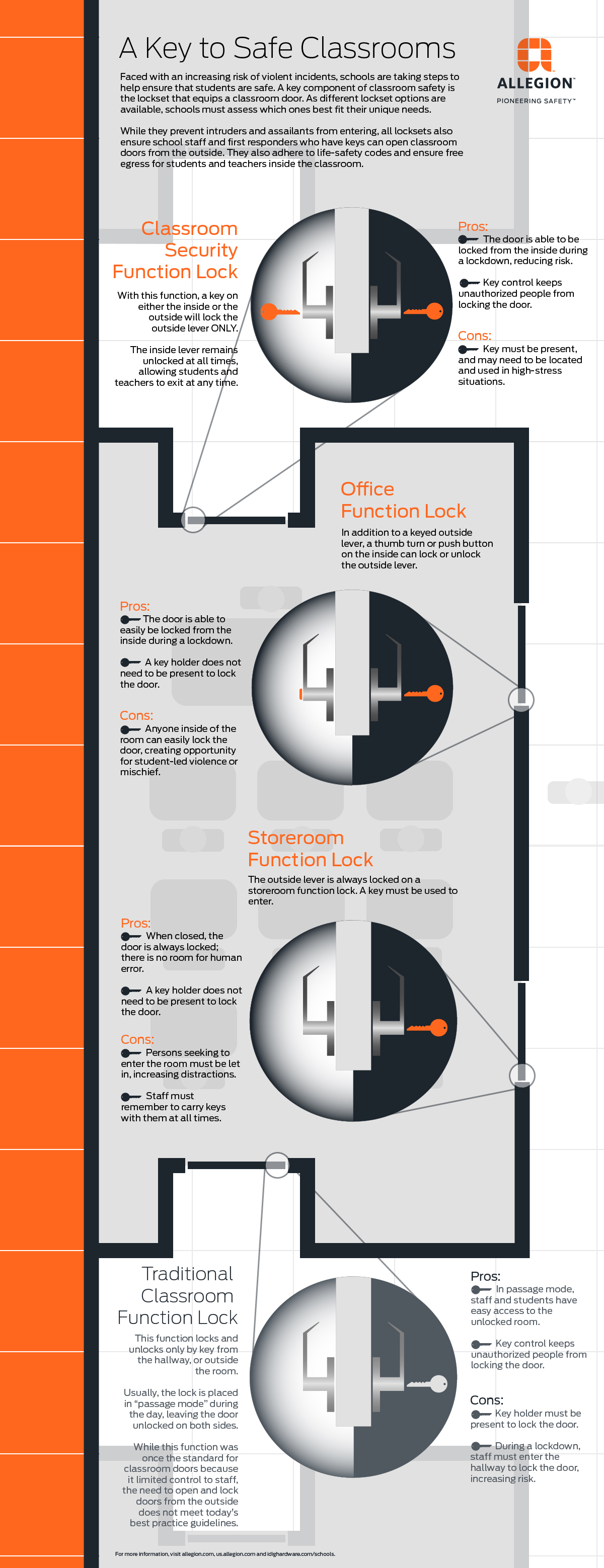When evaluating the security of classroom doors, it can be difficult to determine what type of locks are already on the doors, the pros and cons of the existing hardware, and what (if anything) should be done to improve security. This new infographic from Allegion aims to help clear some of that confusion. Feel free to share it!
You need to login or register to bookmark/favorite this content.







Lori,
I feel this should be made into a poster.
Great idea! I think it would be difficult/expensive to keep posters stocked and mail them without damaging them, but maybe your local Allegion rep can have some made at FedEx/Kinkos for you. 🙂
– Lori
This is a great infographic! The breakdown of the functions really helps to illuminate the options that are available with traditional mechanical locks.
Thanks Bonnie!
– Lori
Nice infographic. Very concise and easy to understand. I have seen a lot of call for the office or corridor function for classrooms were the classroom is shared by various groups. Seems not everyone has a keys to the classrooms so they opt for these options and hope the students do not play those games locking the door.
Hi John –
After specifying traditional classroom locks and then classroom security locks for so many years, I was surprised when I talked to the security director from a large district that had a very tragic school shooting with multiple fatalities. They use office function locks. I asked if they ever had problems with kids locking the doors and he told me that they have 16,000 students and zero problems. This would not hold true for all schools, but I think office function locks are a good choice for some districts.
– Lori
One of the issues in supplying classroom security locks is that it does need a key to lock either cylinder. Thus it is really only feasible for elementary/middle/high schools, as you can ensure the teacher or staff has a key at all times.
In other settings like universities, you can’t guarantee the people in the room will have a key, it may be students, teachers, or other staff. Many teachers also don’t have classroom keys as they are normally kept open. My university has implemented dormitory function locks on all classrooms – handle normally open, push button inside or use key on outside to lock, cannot be locked with button when leaving. On doors with panic hardware, there is a turn knob on the inside to lock or unlock the outside handle, or dog/undog the latch. (This is something I don’t see covered much on this blog – I mainly see the classroom function levers, but when you have high occupancy or hazard rooms you need panics. Often you can use a turn knob in place of a cylinder for dogging or inside locking – have seen this on Sargent and VonDuprin, not sure about Precision.)
This makes it quick and easy to secure the room in a lock down situation, by whoever is in the room. For ACS enabled doors, university police can trigger a campus wide lockdown, locking almost all buildings.
Not at all a professional in the field, just someone who appreciates the details of commonplace things – especially things keeping us safe and secure.
Thanks for sharing your insight, Fred!
– Lori